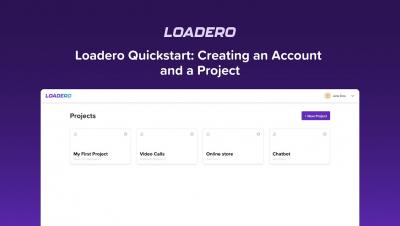Systems | Development | Analytics | API | Testing
Loadero
What's New In Loadero (April 2021)
This month we are especially proud to announce updates that took place in Loadero recently, as we finally added another language to create test scripts, supplemented built-in fake media, and made other improvements to ease testing and make it more insightful for our users. Here is what has been added or changed during the last month.
Integrating tests to your development pipeline. Quickstart guide to Loadero API.
Sometimes using a graphical user interface isn’t enough to fulfill your daily tasks, especially when you start automating your testing routines. Imagine a scenario, when you perform a regression test on a piece of functionality every time you push a new release or merge your code to a particular branch. It would be a nightmare to manually run those tests every time, especially if your team is rather large and you’re practicing continuous delivery.
What's New In Loadero (March 2021)
Time flies by and Q1 of 2021 has already passed. Our team was busy working on improving Loadero to make it easier to use and provide more insightful testing results to our users. We are proud to announce some long-anticipated updates that were done during the last months, make sure to use them for your benefit.
A Beginner's Guide To Test Automation With Javascript (Nightwatch.js). Part 2.
Welcome to the “A beginners guide to test automation with Javascript(Nightwatch.js)” blog series part 2! If you have missed out on the first part, you can read it here. In this article we will look into the following and as always – feel free to skip to any part you are the most interested in: Code used in this article can be found in Loadero’s public GitHub examples repository here.
Load Generation Strategies For Your Performance And Load Tests
Setting a correct increment strategy for load generation is crucial when you are load testing a website or service. It’s especially important to make sure your website will not be bombarded by a huge number of participants all at once. Choosing correct increment strategy helps you organize your test run flow. You are making sure that participants start exactly how you expect. That can be especially useful for WebRTC service testing.
What's New In Loadero (January 2021)
We have set some ambitious targets for 2021 in making Loadero an even better service to help our customers testing web applications easier, write scripts more comfortably and get detailed results reports that can be analyzed quickly for valuable insights about their app’s performance. With the first month of 2021 just ended, we would like to share some recently added improvements to Loadero application.
How To Create An Automated Login Page Test And Use Multiple Credentials
Countless things should be tested within web applications but among them, one of the most important scenarios to be tested and even load tested is the user login process. User login serves as a medium between providing users with most of the product features and therefore requires careful and thorough testing. If your website allows users to log in, a login page test is necessary. An automated test for this can be easily created for this.
A Beginner's Guide To Test Automation With Javascript (Nightwatch.js). Part 1.
Welcome to the “A beginners guide to test automation with Javascript(Nightwatch.js)”! This is a three-part blog series to kick start writing web UI automation using Nightwatch.js. In the following parts you will learn: Sounds exciting? Let’s get started! Writing a script in JavaScript (JS) and Nightwatch.js, aka Nightwatch (NW), is simple once you get started and this guide will help anyone regardless of their skill level.
What's New In Loadero (November 2020)
November was a big month for Loadero in terms of updates. We were working on the compute units feature for a long time and are very happy that now we provide our customers even more control over configuring test participants. We improved our test runner stability and made some important fixes. We are proud to share what has been updated and are sure that this will help you to run even better tests with us.







